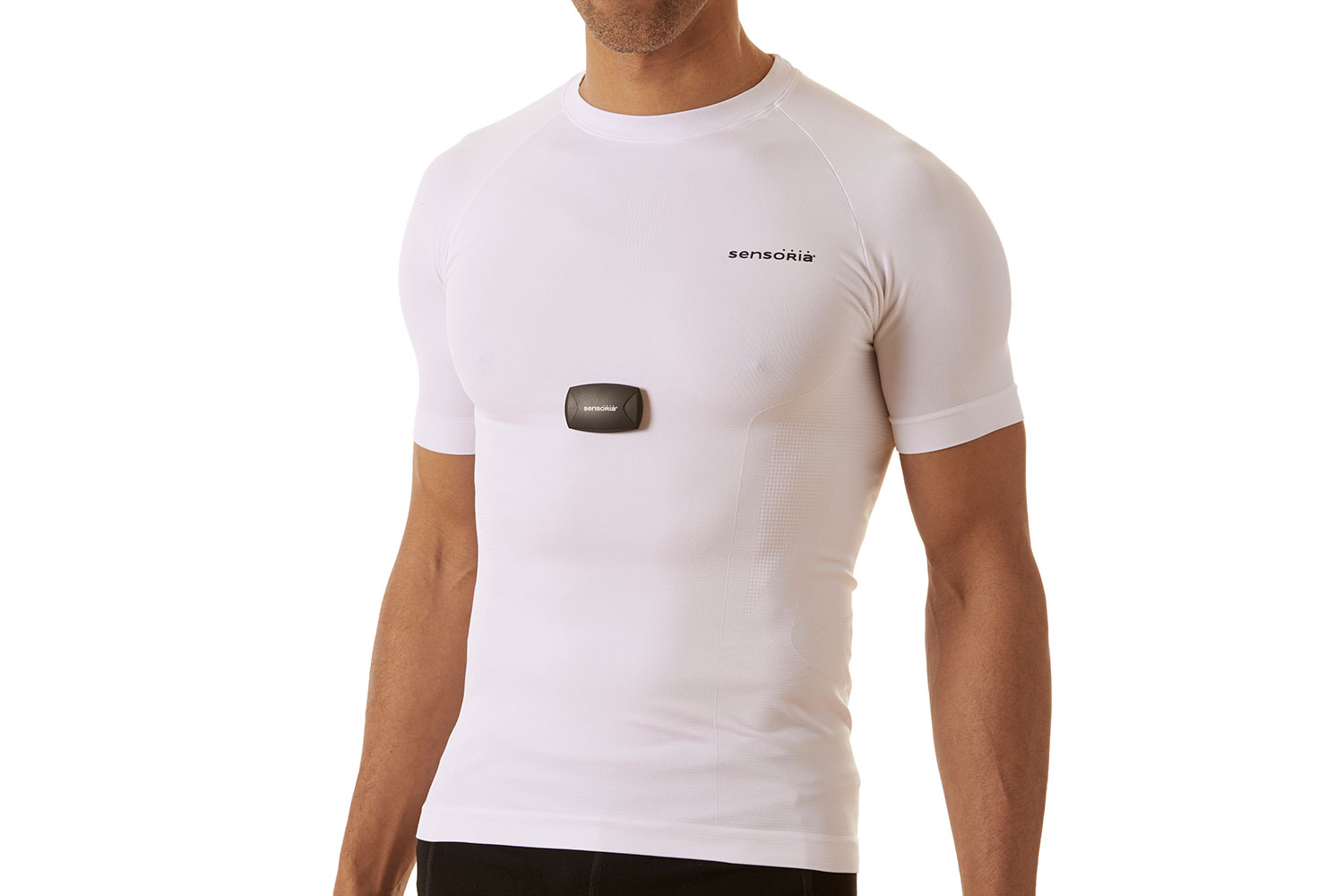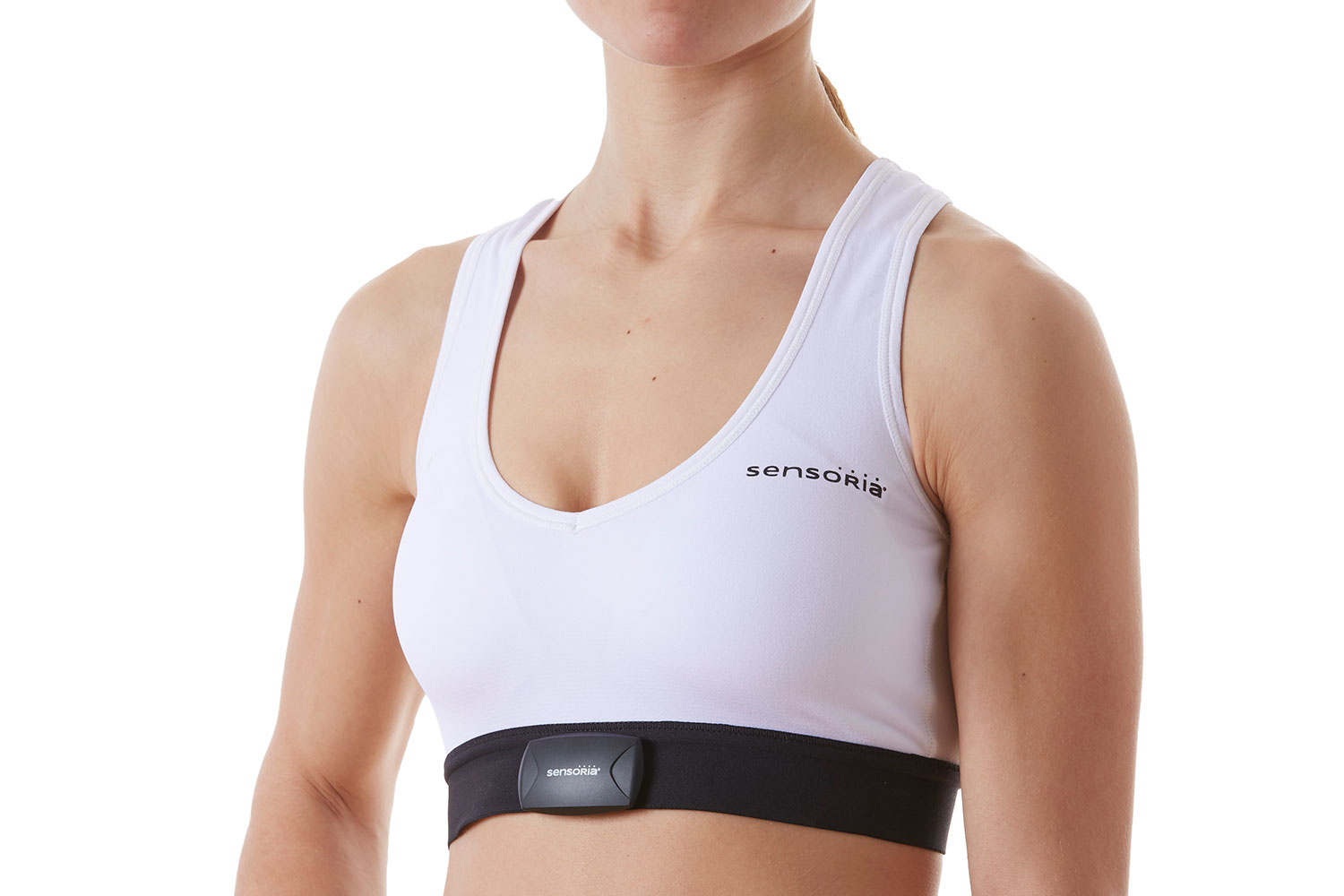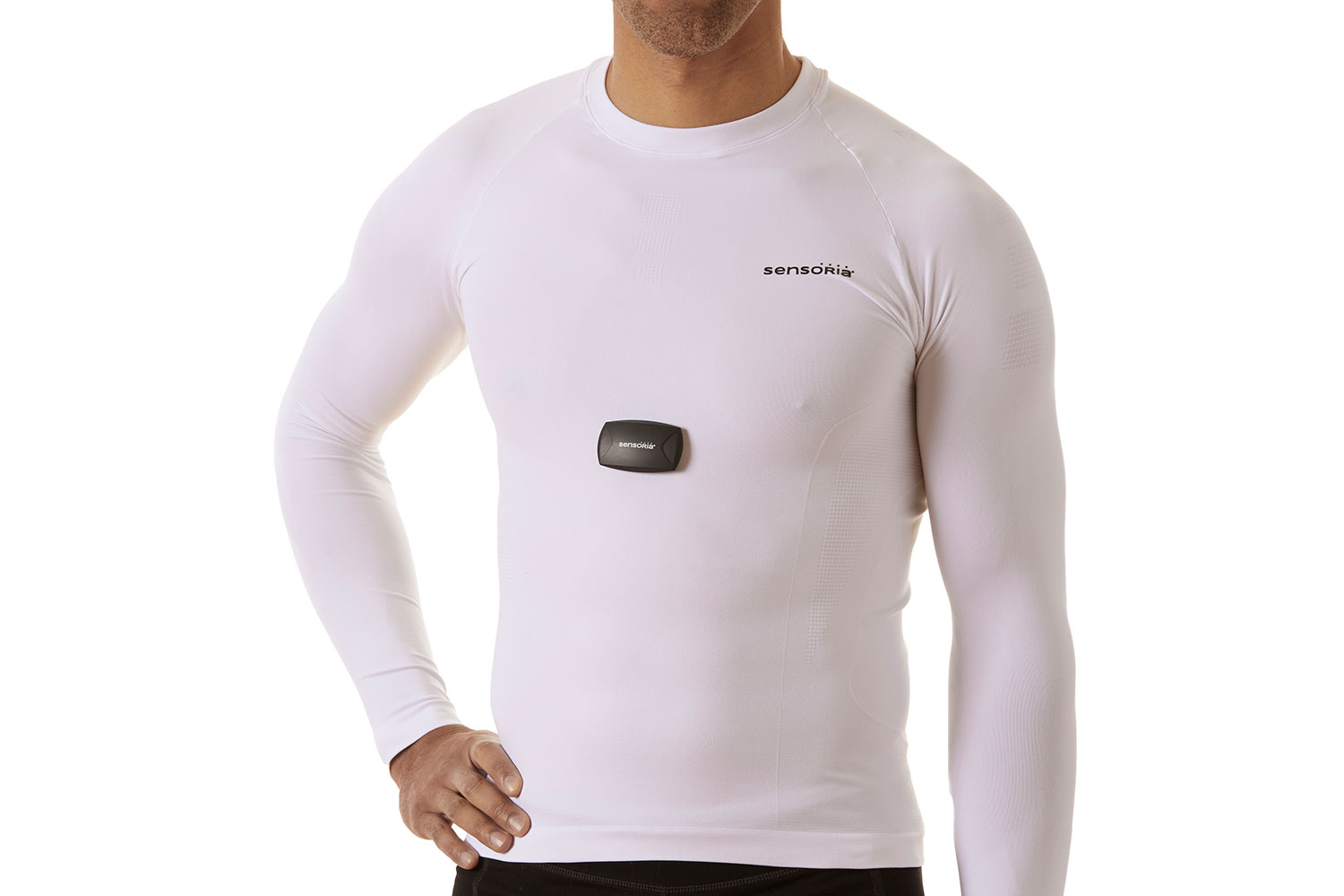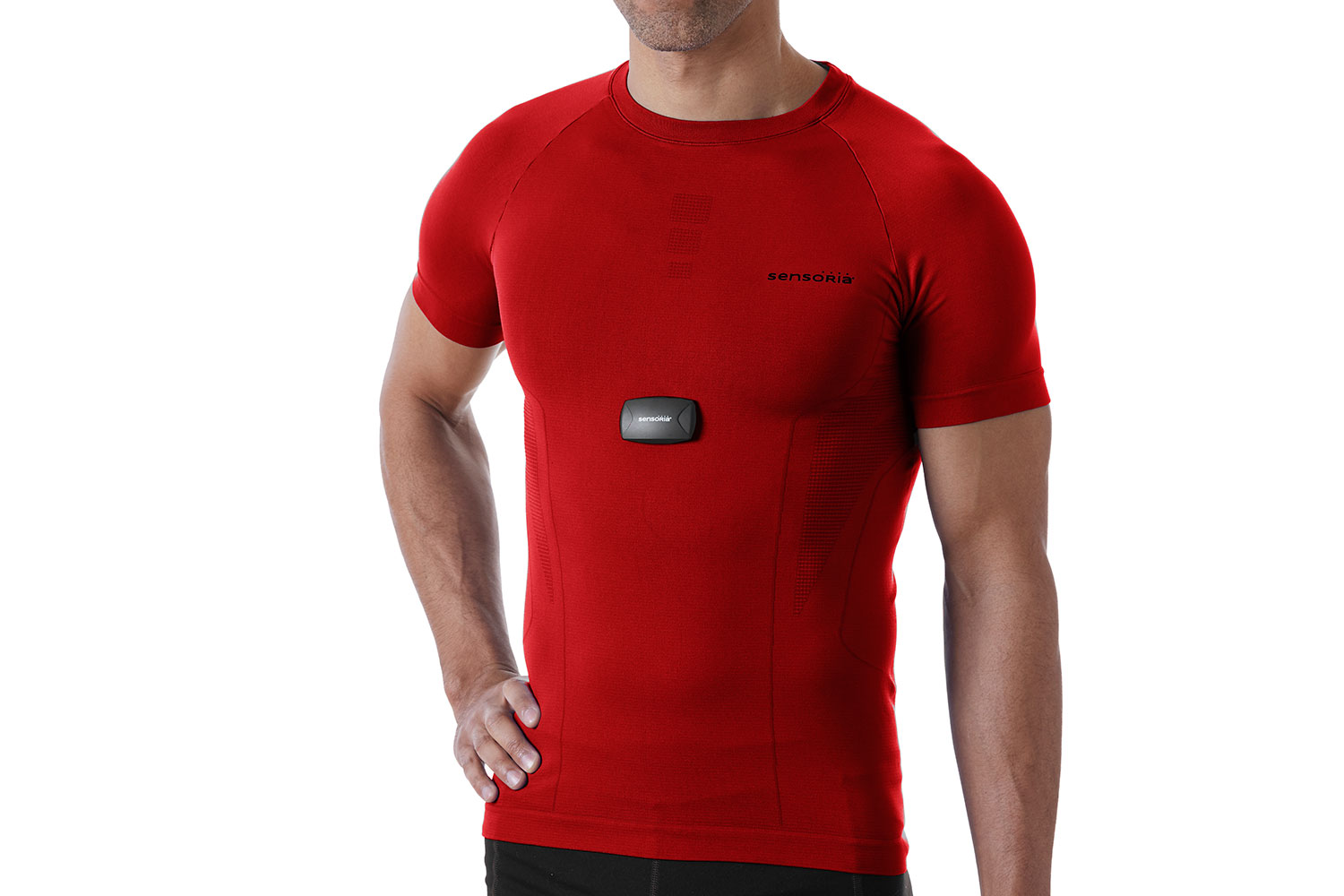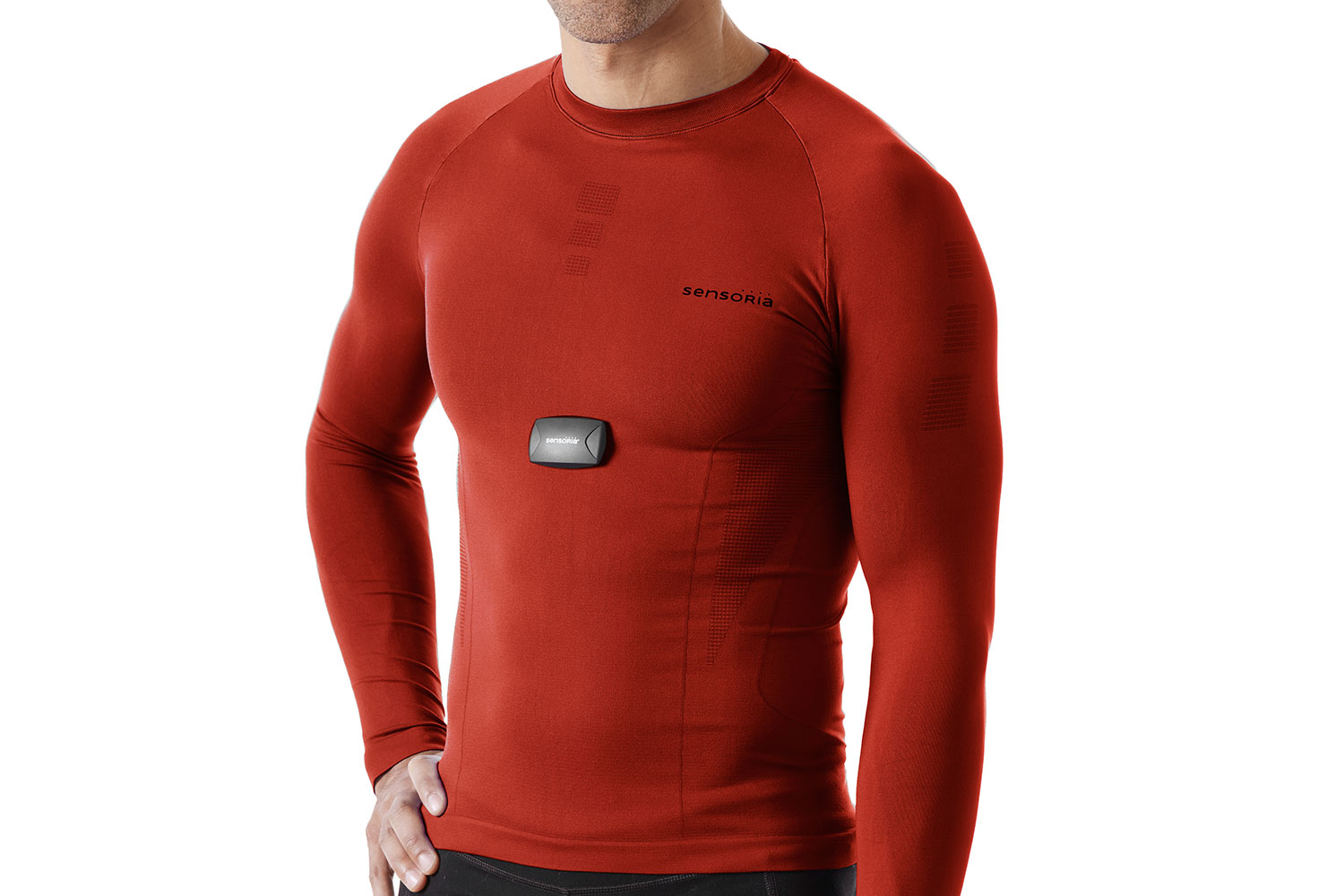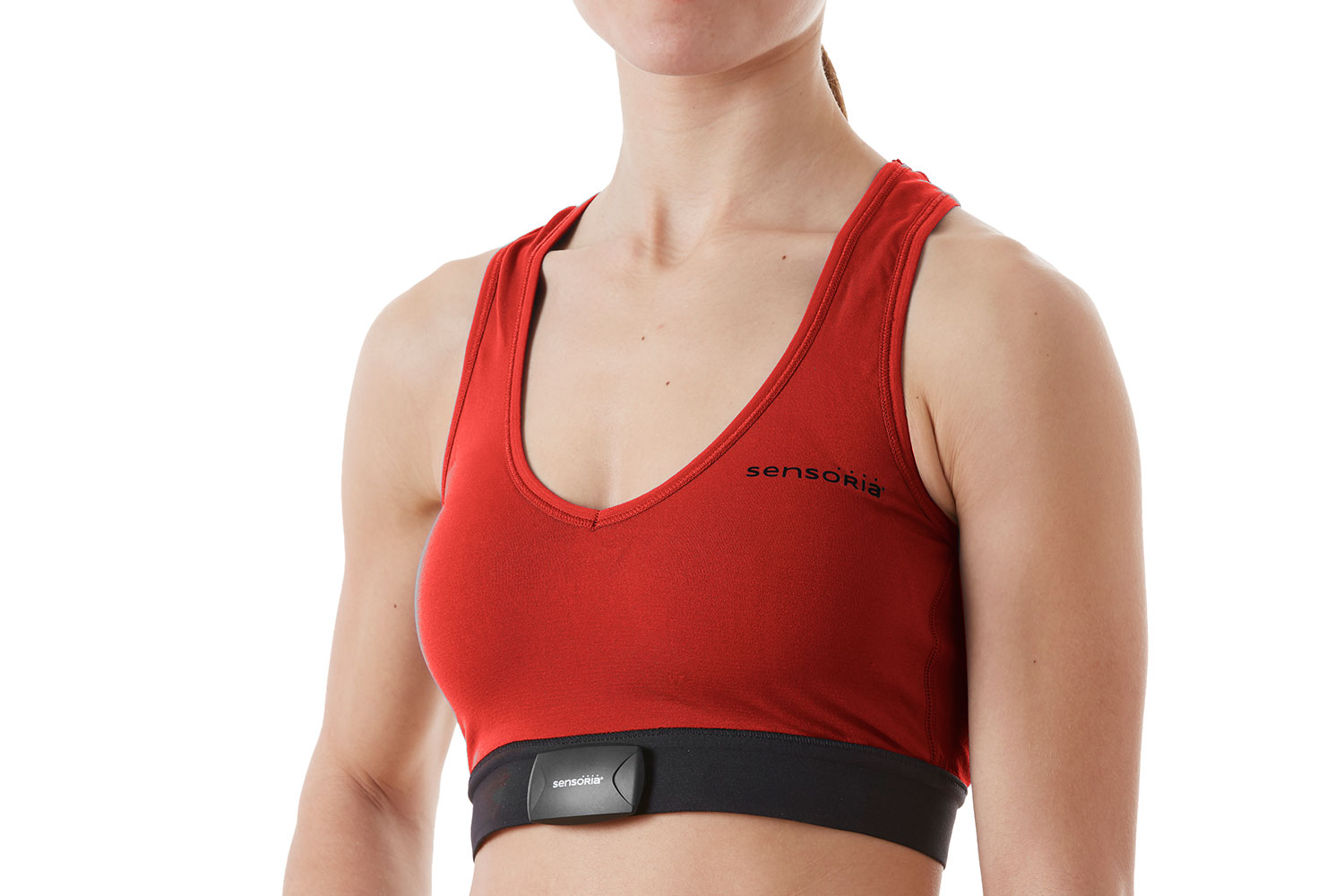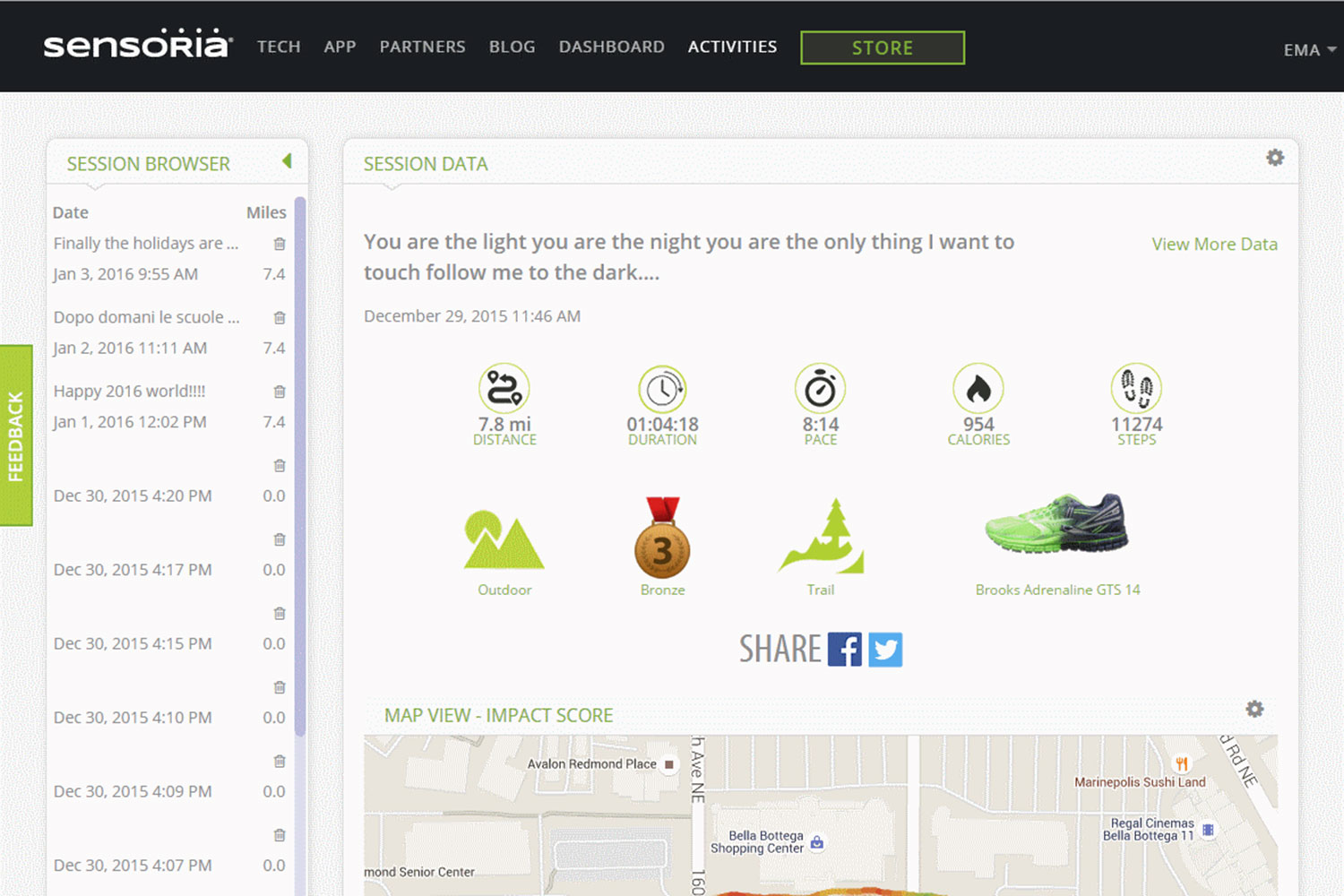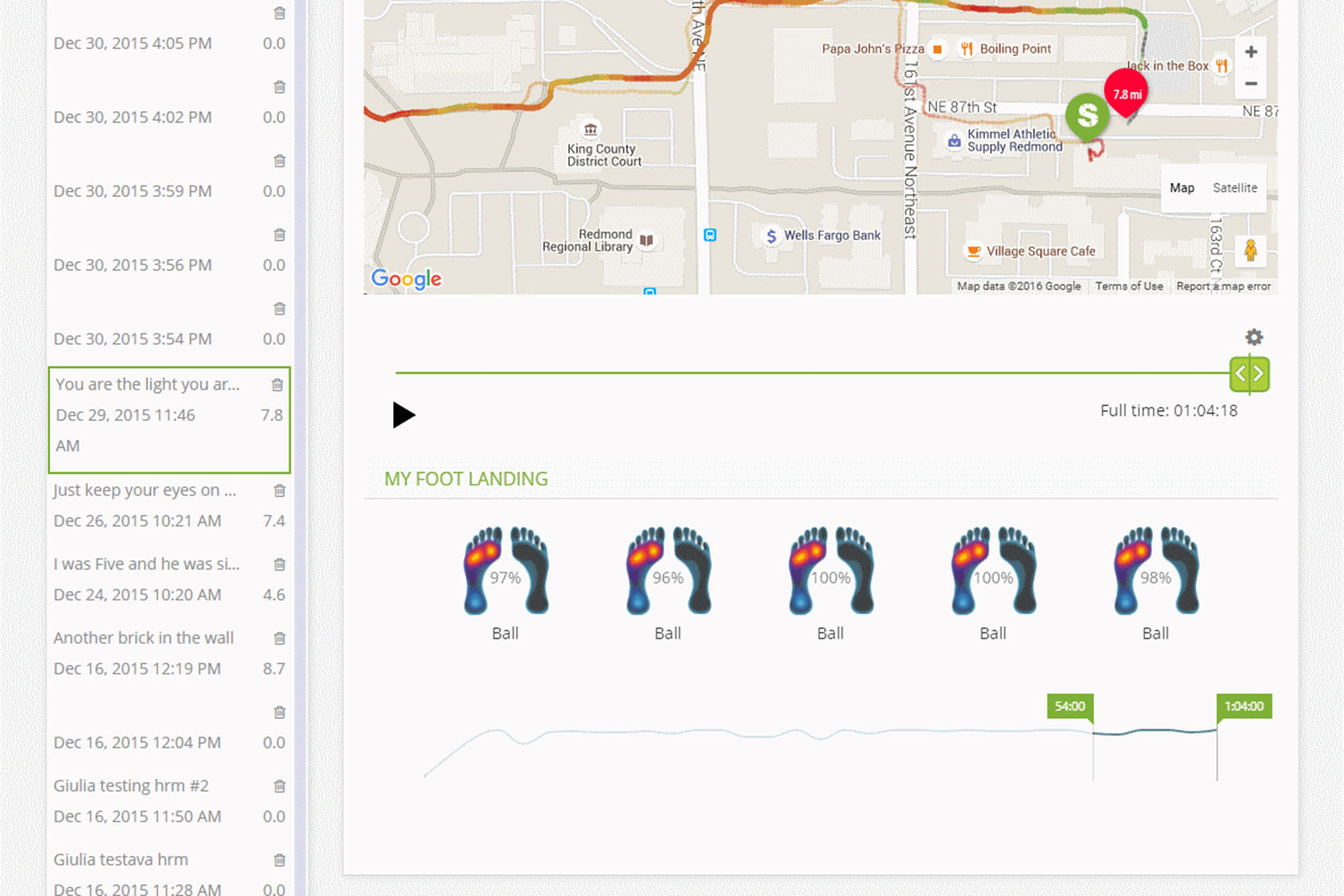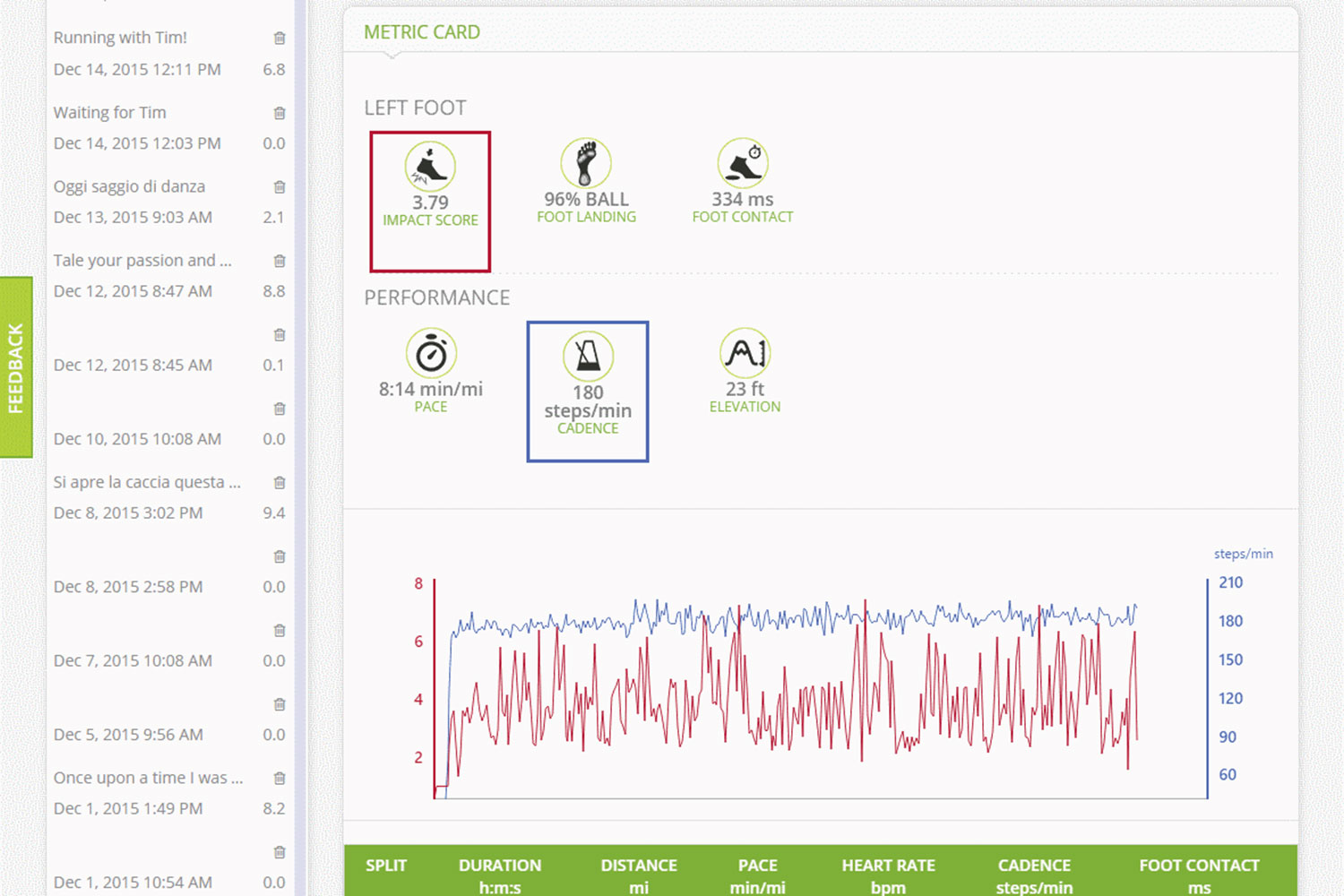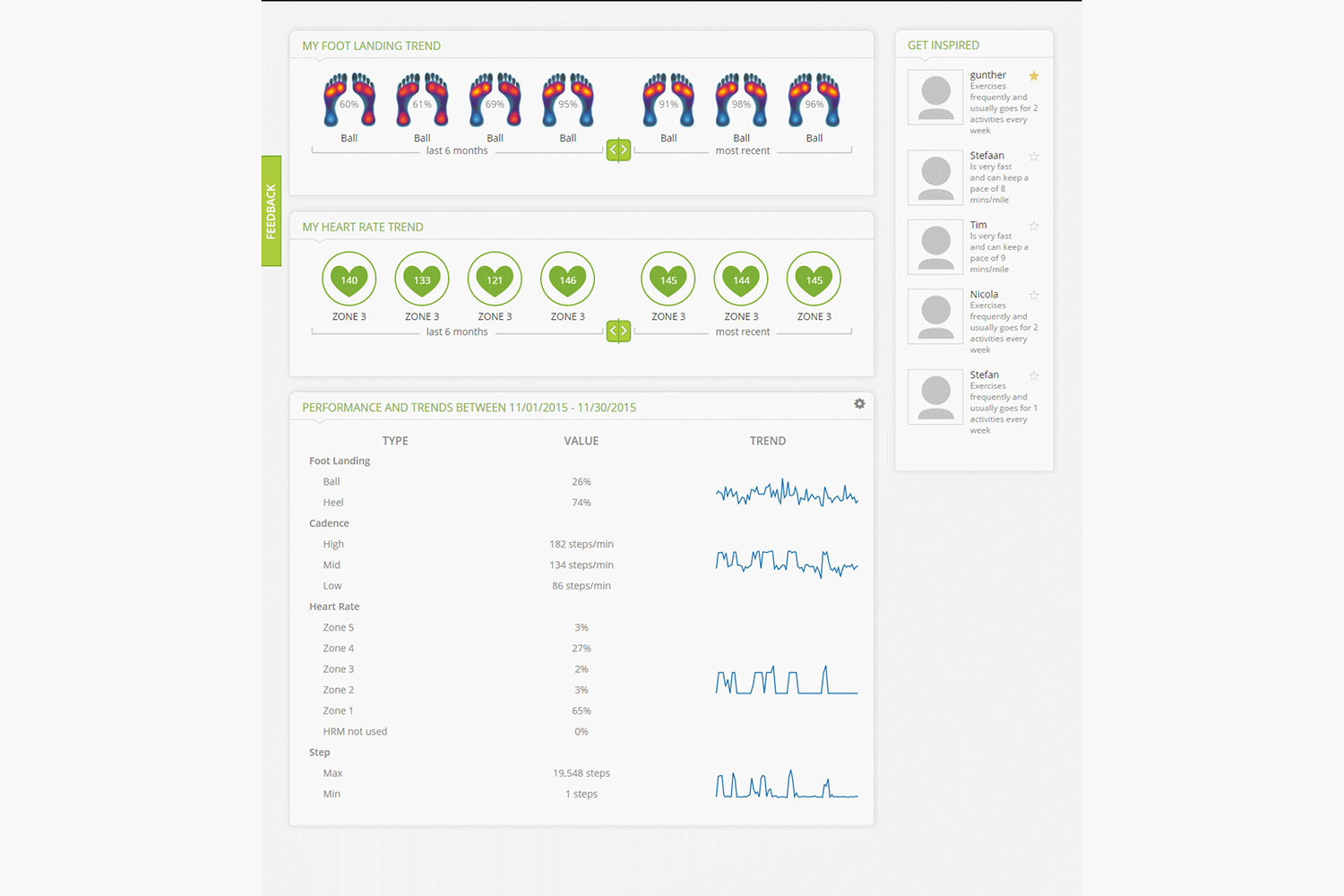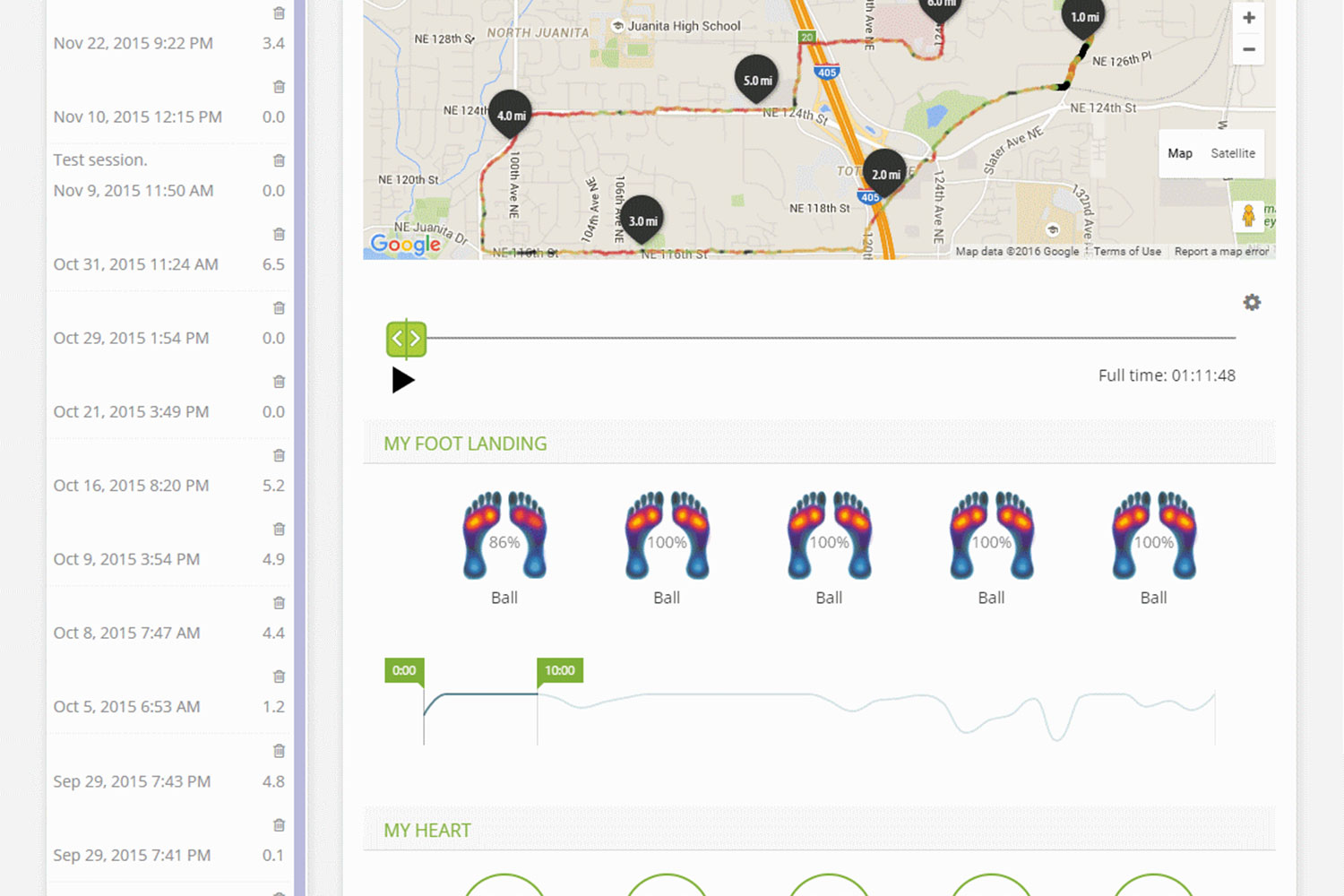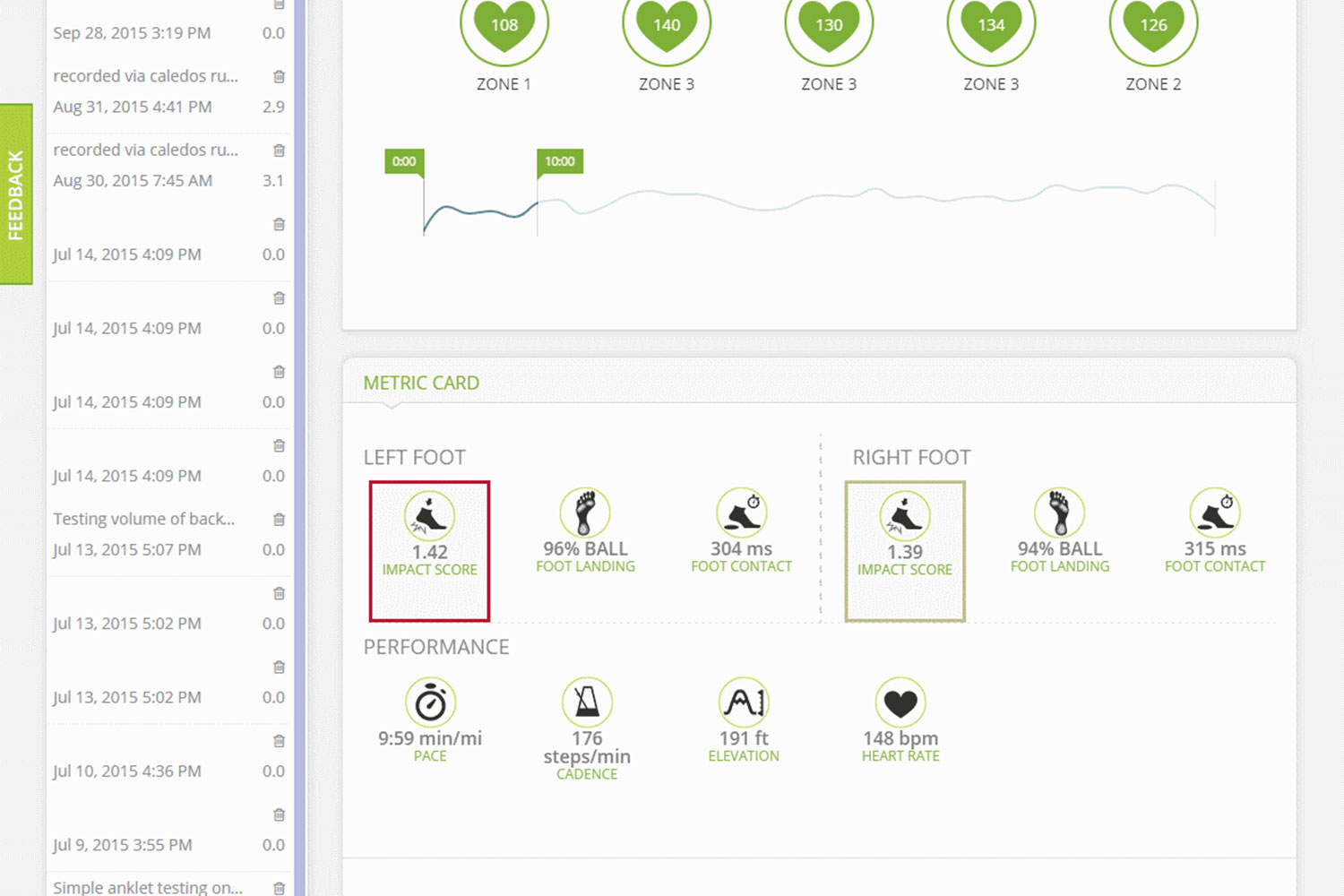Sensoria Fitness makes all manner of apparel embedded with Bluetooth-connected sensors: t-shirts and sports bras pre-wired for heart rate monitors, smart socks lined with embedded pressure sensors, and even magnetic anklets that measure motion. While clothing you have to recharge each night may sound a bit absurd at first, the idea is to eliminate the need for bulky fitness dongles, a goal which, based on our testing, the company has achieved.
But while Sensoria’s hardware performs impressively, until now, its no-frills app has always left a bit to be desired. Unlike most other fitness apps, it didn’t include a guidance component to make sense of the hardware’s deluge of data. Thankfully, though, that’s changing this week.
Sensoria’s launching a big update to its Smart Running System, refining its Web and mobile software to coincide with the kickoff of CES 2016. Its fitness dashboard now offers cardio-centric training based on heart rate data, along with a collation of performance metrics such as cadence, pace, number of steps taken, distance, and speed to help you better identify gait and other shortcomings in your form. Sensoria says its platform is now more holistic than ever, too. New metrics outlining your foot impact score and average stride length now factor into the platform’s per-session and long-term analyses.
In addition, Sensoria will soon launch what it calls the Sensoria Development Kit, an ecosystem that the company says will allow other fitness wearable makers to “harness the same technology … used in Sensoria’s smart garments.” The Sensoria Core, perhaps the platform’s most intriguing element, is a module that sports a low-power processor, storage, 9-axis motion sensor, and wireless connectivity. It’ll form the basis of future Sensoria products: as an example, the company is already planning to replace its fitness anklet with a Sensoria Core that offers twice the battery life yet measures half the size.
With the Sensoria Development Kit, Sensoria’s angling to become the Intel of the fitness industry, licensing its silicon and algorithms to companies that lack the expertise or capital to develop similar tech in-house. “We recognize the wide interest across different industry sectors to adapt wearable technology in a meaningful way,” said Sensoria CTO and co-founder Maurizio Macagno in a press release. “Our technology platform is suitable for apparel, sporting goods, wellness, and health just to name a few.”
Related Products: Sensoria Fitness Apparel
However, Sensoria is far from the only one. Samsung unveiled the Bio-Processor last week, a module of sensors designed for smartwatches and fitness devices. And Intel, coincidentally, unveiled its wearable-bound Curie chip earlier this year. That’s not to say that Sensoria hasn’t got a fighting chance, but the company certainly has its work cut out for it.
